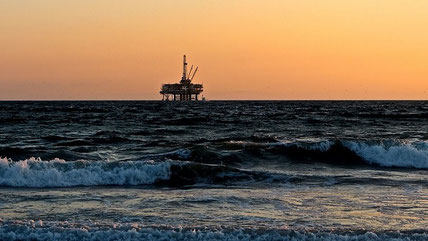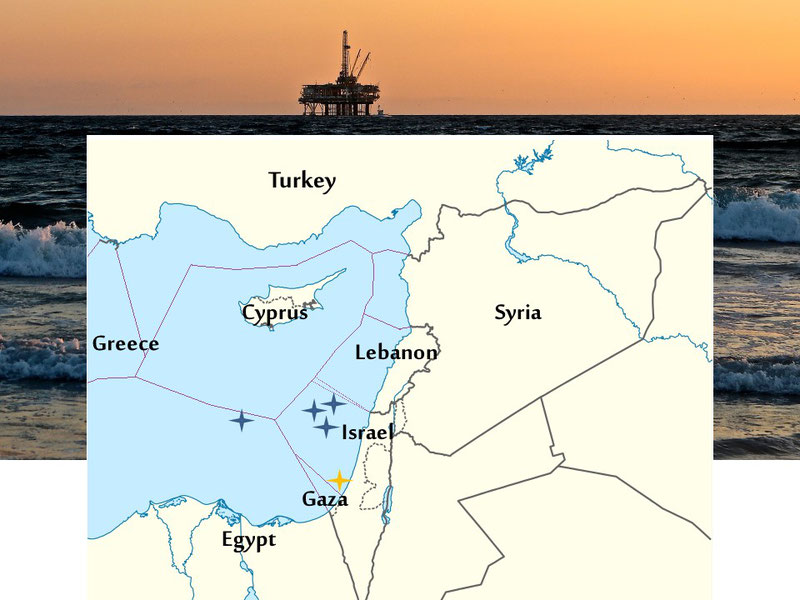
This assessment summarizes the 2022 discoveries and development of natural gas and other hydrocarbon resources in the EastMed region. The Eastern Mediterranean (EastMed) has produced significant discoveries of hydrocarbon resources since the late 1990s and has become a strategic point of international cooperation, though also a focal point for potential conflicts in the region. The discoveries of natural gas resources had prompted Israel and Egypt to begin massive industrial gas production offshore projects in the Levant Basin, whereas Cyprus and Palestinian Gaza which do pocess proven resources in their economic zones are yet to begin explotation and monetization. As for Lebanon, the country is yet to prove actual gas resources despite promising prospects, while Turkish attempts to drill around the island of Cyprus on behalf of Northern Cyprus has fallen short. Finally, Syrian offshore zones couldn't yet produce any find due to long-lasting security crisis in the country.
Discoveries of hydrocabon prospects in the region began in late 1990s and produced confirmed gas discoveries in the year 2000. In 2010, following significant discoveries of natural gas in the Israeli Exculsive Economic Zone (EEZ), the U.S. Geological Survey (USGS) produced a comprehensive study named "Assessment of Undiscovered Oil and Gas Resources of the Levant Basin Province, Eastern Mediterranean", estimating a mean of 1.7 billion barrels of recoverable oil and a mean of 122 trillion cubic feet (TCF) of recoverable gas in the Levant Basin using a geology based assessment methodology. At the time of the publication of the USGS report in 2010, there had been already some 27 TCF of P2 (50% probability) gas resources identified in the Levantine Basin - including 26 TCF in the Israeli Noa, Mari-B, Tamar and Leviathan findings, as well as 1 TCF in the Gaza Marine field in Mediterranean waters adjacent to Palestinian Gaza. As of 2022, the cumulative quantity of confirmed P2 gas resources found in the economic zones of regional players in the Eastern Mediterranean is estimated at 85 TCF with about 75-78 TCF available for extraction, and with extrapulated potential for dozens TCFs of additional findings.

During 2022, Israeli EEZ was added with the third gas production site at Karish-Tanin location, inaugurated on October by Energian. Other players in the Israeli offshore hydrocarbon play set involved in older Tamar and Leviathan projects are Chevron (former Noble Energy), Tamar Petroleum, NewMed Energy (formerly Delek Group), Isramco, Mubadala Investment, Ratio, Dor Gas and Everest. Altogether, known Israeli resources are at about 37-38 TCF, with some 6 TCF of resources already consumed. More gas findings took place in Zeus, Hermes and Athena wells by Energian, announced on the course of 2022 in Block 12. Thus, combined resources include the already exploited 1.3 TCF Yam Tethys gas fields, producing 22 TCF Leviathan field, producing 10.8 TCF Tamar field, newly producing 2.3 TCF Karish & Tanin fields and about 1 TCF in minor fields such as Dalit and the recently discovered Zeus, Hermes and Athena fields.
Now let's take a look south to Egypt, which is an ally of the Israeli-Cypriot-Greek "Energy Triangle" and has a significant foot print in the Levant Basin in terms of its economic zone. ENI is one of the first companies to become involved in the Egyptian offshore zone and is the main licence holder of the giant 30 TCF Zohr gas field. ENI's (50%) partners in Zohr are BP (10%), Rosneft (30%) and Mubadala Petroleum (10%). ENI is also holding the stale Damietta LNG facility in partnership with Naturgy via Union Fenosa joint venture, whereas the sporadically operating Idku LNG facility is held by Royal Dutch Shell, Petronas, Engie, EGAS and EGPC. Many of those companies are also involved in the Nile Delta basin in the southern parts of Egyptian EEZ and its shores, but those are outside the scope of the discussed Levantine Basin.
Developments during the past year in Cyprus include the confirmed gas finding in Glaucus-2 well by ExxonMobil-led consortium (including also Qatar Petroleum), announced on May 2022. The drilling of the well was conducted in the Block 10 area in the Cypriot EEZ from December 2021. It must be noted that Block 10 area is challenged by Turkey within the context of the Cyprus Conflict. Both ENI and Royal Dutch Shell are also present in Cyprus, with ENI holding licenses for blocks 2,3,9 in 50% partnership with Korean KOGAS, licenses for blocks 6,11 in 50% partnership with Total and license for block 8 on its own. Royal Dutch Shell has a 30% interest in the Aphrodite gas field in Block 12, where it is partnered with Israel NewMed Energy (former Delek Group) and Chevron (former Noble Energy). The latest confirmation of gas findings brings the cumulative quantity of proven resources in the Cypriot EEZ to some 15.0-18.0 TCF, including 3 TCF Aphrodite , 7 TCF Calypso and 5-8 TCF Glaucus.
To complete this overview, a look at other players in the region - first of all, the Palestinian 1 TCF Gaza Marine field, which was disovered some two decades ago by British Gas but failed to monetize due to a number of reasons - most notably its small size and lack of sufficient offtakers to justify its development. The Gaza Marine field is now held by the Palestinian Investment Fund (PIF), which belongs to the Palestinian Authority, and the private CCC group. Secondly, Lebanon which had issued its first tender for offshore exploration in 2018 and did attract major international players - the results of those activities are however very limited so far despite the promising potential of 25 TCF, mainly close to the border of Lebanese and Israeli EEZs (and being the topic of the maritime economic zone dispute between the countries). In addition, there is Turkey which since 2019 has performed hydrocarbon exploration on behalf of Northern Cyprus, but has so far failed to find any resources around the island and did produce geopolitical tensions. Finally, Syrian offshore zones couldn't yet produce any find due to long-lasting security crisis in the country.







